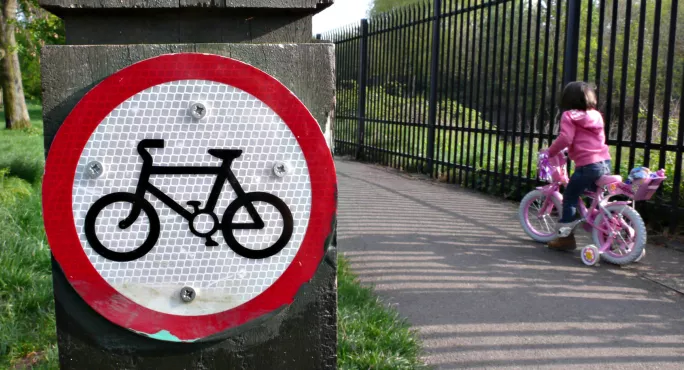- Home
- Why some school rules are made to be broken
Why some school rules are made to be broken

An interesting thing happened recently when my children and I were enjoying a swim at the local pool.
I had persuaded them, finally, that we were definitely getting out and that this time I really, really meant it, and my daughter struggled to heave herself out of the deep end.
“Use the steps over there or I can help you,” I said.
Quick read: ‘Behaviour gimmicks don’t offer a quick fix’
Quick listen: How to spot education education myths and read research
Want to know more? Character education: what role should schools play?
“I can’t use the steps, that lane is closed,” she responded.
My daughter wasn’t prepared to cross the five metres of empty pool because the big, red sign said LANE CLOSED and there was a lane rope in the way even though the swimming lesson that caused it to be closed had clearly finished and they were clearing away.
I suspect my daughter inherits this behaviour from me. I’m a rule-follower.

The urge in me to abide by rules, even ones that are petty or stupid, is enormous. I’m the kind of person that will follow a one-way system in a school even when I’m the only person left in the building.
I’ve written before about reward and punishment (extrinsic motivation, or, as I prefer to think of it “Do this, get that” or “Do this, avoid that”) and intrinsic motivation (doing things for their own sake or because they are satisfying or fulfilling).
Rule-following is a form of extrinsic motivation and it can be split into two different categories.
On one level there is the rule-following behaviour my daughter displayed. I see a lot of this in schools.
Letter of the law
When I first worked in a comprehensive, some of the more timid children seemed to consume megajoules of energy constantly policing their own behaviour and uniform to ensure they stayed on the right side of the law.
They would have been devastated to find that their tie was only showing five stripes instead of the regulation six.
These students are one reason that I worry about the ever-tightening grip on rules in school, such as those on uniform. If it becomes easy to get into bother, some children who are not being disruptive and are not doing anything wrong will find themselves in trouble.
My current favourite silly uniform rule is the one where long sleeved shirts are allowed, as are short-sleeved shirts but children are in trouble if they roll up their long sleeves.
This is in no way disruptive or offensive, but doing so technically breaks a rule. The same goes for an insistence on eye contact. Failure to do this becomes de facto defiance.
This is where we can see resentment build up, and a concerted effort on the part of some children to break those rules precisely because they are petty. Despite being a rule-follower, even I feel the urge to break rules occasionally, simply because they are ridiculous.
Rules of the road
Surely it is better to aim for the extrinsic motivator that sees children follow rules because they see the value of those rules. Speeding is a good example.
You can stick to the speed limit to avoid a speeding fine or a ban, but it is immediately evident that this is a low bar to set.
We all know that drivers like to play the percentages and will speed when they think the chances of getting caught fall below a certain level. Other drivers stick to the speed limit because it is there and they respect the law, which is better.
But far better to stick to the speed limit because it valued and understood that everyone is safer when we all do this.
This long-lasting change in behaviour is what speed awareness courses aim to do; to show the benefits to all of following a rule, and the potentially devastating consequences if we don’t.
When deciding how our schools should be set up, we should give careful thought to avoid over-policing and to set out rules that are valuable to our students.
They are more likely to understand and appreciate that their school and society is a safer and nicer place to be if everyone follows these rules and it becomes in everyone’s best interests to do so.
Jarlath O’Brien is an executive headteacher in a secondary school and is the author of Better Behaviour - a guide for teachers, published by SAGE
Keep reading for just £1 per month
You've reached your limit of free articles this month. Subscribe for £1 per month for three months and get:
- Unlimited access to all Tes magazine content
- Exclusive subscriber-only stories
- Award-winning email newsletters



